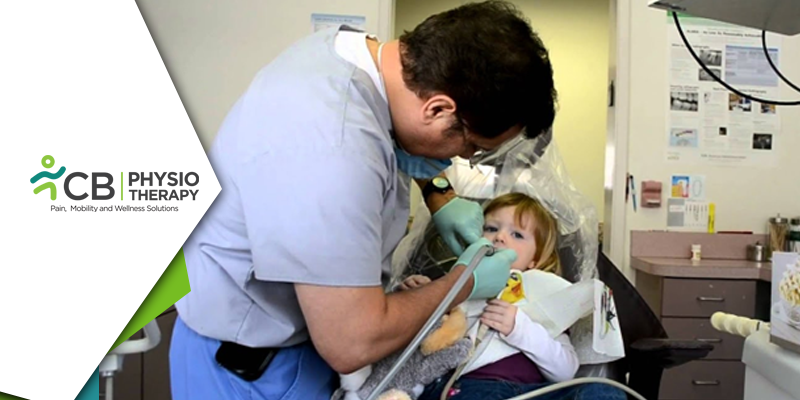Cardiac Surgery is successfully performed on numerous Pediatric patients suffering from many different congenital heart defects. The frequency of heart surgery in children with congenital heart disease is very high, and the occurrence of pulmonary complications in post-operative heart surgery is equally common. Children also have postoperative pulmonary risks similar to adults. Since the complications like atelectasis and pneumonia are highlighted among them, it is important to make use of effective means to prevent, reduce or treat such complications. These complications are minimized by drugs, and by Physiotherapy. Positive results have been found after providing physiotherapy services in preoperative and postoperative pediatric cardiac surgery patients. This blog summarizes the efficacy of Pediatric Physiotherapy treatment through different techniques emphasizing the importance of early mobilization and ambulation and also promotes the application of physiotherapy pre and post-operative pediatric cardiac surgery.
PHYSIOTHERAPY
Physiotherapy in the pre-and postoperative period in pediatric cardiac surgery is used to reduce the risk of pulmonary complications like atelectasis, retention of secretions, and pneumonia. Physiotherapy interventions contribute to the appropriate ventilation and successful extubation.
Pre-operative Physiotherapy:
Physiotherapy techniques used are clearance, re-expansion, abdominal support, and guidance on the importance and objectives of physiotherapy intervention for parents.
Post-operative Physiotherapy:
Postoperative physiotherapy includes vibration in the chest wall, percussion, compression, manual hyperinflation, re-expansion maneuver, positioning, postural drainage, cough stimulation, aspiration, breathing exercises, mobilization, and acceleration of expiratory flow.
After heart surgery, the child must be repositioned (approximately every two hours) throughout the day to ensure that the lungs stay well-expanded and free of mucous. This will also help the child to recover the movement. Whether the child is still on the breathing machine or is breathing by himself, the physiotherapist will check whether the lungs are clear of secretions. The physiotherapist will use techniques to help increase the air going to the lungs and to clear the secretions from the lungs. These techniques may include positioning, deep breathing exercise, chest percussion, and coughing.
The child should start moving soon after the operation and the physiotherapist will help the child with sitting out of bed if the child is old enough, start walking in the first couple of days after surgery.
Good positions post-operation includes turning the child onto the side, onto the back, holding him in the arms, and placing them into an infant seat. This will help the child recover sooner so that he can go home.
Aspiration with the techniques of respiratory physiotherapy such as manual vibration, positioning, percussion, compression, manual hyperinflation, and postural drainage are found to be beneficial. Physiotherapy tends to produce improvement in pulmonary compliance, expiratory tidal volume, and pulmonary resistance.
The treatment for atelectasis consists of physiotherapy, deep breathing, incentive spirometry, etc. However, sometimes, atelectasis is difficult to reverse and it is necessary to associate it with another method, respiratory physiotherapy, and inhalation of hypertonic saline solution with NaCl at 6% is recommended.
Chest radiographs and four physiotherapy sessions lasting 20 minutes were performed daily, using maneuvers of bronchial hygiene, pulmonary re-expansion, postural drainage, and tracheal aspiration shows significant results. Immediately before and after physiotherapy inhalation of hypertonic saline solution with NaCl at 6% can be given.
Breathing exercises are recommended in cases of atelectasis due to thoracic or upper abdominal surgery, because they improve respiratory efficiency, increase the diameter of the airways, which helps to dislodge secretions, prevent alveolar collapse, and facilitate the expansion of the lung and peripheral airways clearance.
Significant increase in oxygen saturation and reduction in cardiac and respiratory rate after intervention with the increased expiratory flow in children with pneumonia has been proven and the physiotherapeutic technique for bronchial hygiene is found to be effective in improving lung function.
When the presence of pulmonary complications is associated with other complications regarding the time of hospital stays, such as sepsis, pneumothorax, pleural effusion, and others, if the patient is treated by physiotherapy before and after surgery it shows a lower risk of developing such complications.
Post Surgery:
Avoid activities that disturb the wound.
Avoid lying on the tummy.
Take care of the chest muscles and bones during any movement.
Avoid lifting the toddlers under the arms. Lift the baby under the head/neck and bottom.
Physiotherapy is included in the multidisciplinary team that contributes significantly to the better prognosis of Pediatric patients undergoing heart surgery, as it prevents and treats pulmonary complications using various techniques. The effectiveness of physiotherapy in reducing the risk and/or treating pulmonary complications caused by surgical procedures in children with congenital heart disease has been proven

